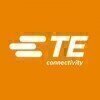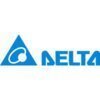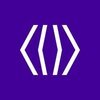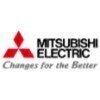Filter interviews by
MCM Telecom Equipment Interview Questions and Answers
10 Interview questions
The 7 Wastes are inefficiencies in processes that can be eliminated to improve productivity and quality in manufacturing.
Overproduction: Producing more than needed, leading to excess inventory. Example: Manufacturing 100 units when only 50 are ordered.
Waiting: Idle time when resources are not being utilized. Example: Workers waiting for materials to arrive.
Transport: Unnecessary movement of products or materials. ...
The 7 QC Tools are essential techniques for quality control and improvement in various industries, aiding in problem-solving and decision-making.
Cause-and-Effect Diagram: Also known as a fishbone diagram, it helps identify potential causes of a problem, such as production defects.
Check Sheet: A structured form for collecting and analyzing data, useful for tracking defects or issues over time, like customer complai...
The least count value of a vernier caliper is the smallest measurement that can be read on the scale.
The least count value is typically engraved on the main scale of the vernier caliper.
It is calculated by dividing the smallest division on the main scale by the total number of divisions on the vernier scale.
For example, if the smallest division on the main scale is 0.1 mm and there are 10 divisions on the vernier ...
The 7QC tools are a set of quality control tools used by process engineers to identify and solve problems in manufacturing processes.
The 7QC tools include: Pareto chart, cause-and-effect diagram, check sheet, control chart, histogram, scatter diagram, and flowchart.
These tools help process engineers analyze data, identify root causes of problems, and make data-driven decisions.
For example, a process engineer may u...
5S is a methodology used to organize and improve the workplace by eliminating waste and creating a clean and efficient environment.
5S stands for Sort, Set in Order, Shine, Standardize, and Sustain.
Sort involves removing unnecessary items from the workplace.
Set in Order focuses on arranging necessary items in a logical and efficient manner.
Shine involves cleaning and maintaining the workplace.
Standardize establishe...
Functional testing is a type of software testing that verifies the functionality of an application or system.
It focuses on testing the individual functions or features of the software.
It ensures that the software meets the specified requirements and works as expected.
It involves testing the inputs, outputs, and interactions of the software.
It can be performed manually or using automated testing tools.
Examples incl...
Visual inspection is a method of evaluating the quality of a product or process by visually examining it.
Visual inspection involves using the human eye to detect defects, flaws, or deviations from the desired standards.
It is a non-destructive testing method that can be performed at various stages of production or during final inspection.
Visual inspection can be aided by tools such as magnifying glasses, microscope...
Quality tools document is a collection of tools and techniques used to improve process quality.
Quality tools document includes various tools such as flowcharts, histograms, control charts, Pareto charts, etc.
These tools help in identifying and analyzing process problems, and finding solutions to improve quality.
Quality tools document is an important part of quality management system and is used in various industri...
Quality tools are techniques and methods used to improve and maintain the quality of products and processes.
Quality control charts
Pareto charts
Fishbone diagrams
Statistical process control
Root cause analysis
Failure mode and effects analysis
Design of experiments
Six Sigma methodology
5S is a methodology used to organize a workplace for efficiency and effectiveness by identifying and storing items used, maintaining the area and items, and sustaining the new order.
5S stands for Sort, Set in Order, Shine, Standardize, and Sustain.
Standardize in 5S refers to creating consistent processes and procedures for maintaining the organized workplace.
Examples of standardizing in 5S include creating visual ...
MCM Telecom Equipment Interview Experiences
15 interviews found
(2 Questions)
- Q1. Least count value of vernier caliper
- Ans.
The least count value of a vernier caliper is the smallest measurement that can be read on the scale.
The least count value is typically engraved on the main scale of the vernier caliper.
It is calculated by dividing the smallest division on the main scale by the total number of divisions on the vernier scale.
For example, if the smallest division on the main scale is 0.1 mm and there are 10 divisions on the vernier scale...
- Q2. What is 5's ,tell about standardise
- Ans.
5S is a methodology used to organize a workplace for efficiency and effectiveness by identifying and storing items used, maintaining the area and items, and sustaining the new order.
5S stands for Sort, Set in Order, Shine, Standardize, and Sustain.
Standardize in 5S refers to creating consistent processes and procedures for maintaining the organized workplace.
Examples of standardizing in 5S include creating visual manag...
(1 Question)
- Q1. Ict machine fct machine
I applied via Naukri.com and was interviewed in Dec 2023. There was 1 interview round.
(2 Questions)
- Q1. What is 5s and work?
- Ans.
5S is a methodology used to organize and improve the workplace by eliminating waste and creating a clean and efficient environment.
5S stands for Sort, Set in Order, Shine, Standardize, and Sustain.
Sort involves removing unnecessary items from the workplace.
Set in Order focuses on arranging necessary items in a logical and efficient manner.
Shine involves cleaning and maintaining the workplace.
Standardize establishes con...
- Q2. What is 7qc tools and used
- Ans.
The 7QC tools are a set of quality control tools used by process engineers to identify and solve problems in manufacturing processes.
The 7QC tools include: Pareto chart, cause-and-effect diagram, check sheet, control chart, histogram, scatter diagram, and flowchart.
These tools help process engineers analyze data, identify root causes of problems, and make data-driven decisions.
For example, a process engineer may use a ...
I applied via Walk-in and was interviewed in Sep 2023. There was 1 interview round.
(1 Question)
- Q1. 7 QC TOOL, Analysis method
I appeared for an interview before May 2024, where I was asked the following questions.
- Q1. What is your KRA and your responsibility
- Ans.
As a PQC Engineer, my KRA involves ensuring product quality, compliance, and continuous improvement in manufacturing processes.
Quality Assurance: Conduct regular inspections and tests on products to ensure they meet quality standards, such as performing tensile strength tests on materials.
Process Improvement: Analyze production processes to identify inefficiencies and implement solutions, like reducing cycle time throu...
- Q2. What is 7 QC Tools
- Ans.
The 7 QC Tools are essential techniques for quality control and improvement in various industries, aiding in problem-solving and decision-making.
Cause-and-Effect Diagram: Also known as a fishbone diagram, it helps identify potential causes of a problem, such as production defects.
Check Sheet: A structured form for collecting and analyzing data, useful for tracking defects or issues over time, like customer complaints.
C...
- Q3. What is 7 Wastage
- Ans.
The 7 Wastes are inefficiencies in processes that can be eliminated to improve productivity and quality in manufacturing.
Overproduction: Producing more than needed, leading to excess inventory. Example: Manufacturing 100 units when only 50 are ordered.
Waiting: Idle time when resources are not being utilized. Example: Workers waiting for materials to arrive.
Transport: Unnecessary movement of products or materials. Examp...
Interview Preparation Tips
I applied via Walk-in and was interviewed in Mar 2023. There was 1 interview round.
(1 Question)
- Q1. What is about your self
I applied via Approached by Company and was interviewed before Jul 2022. There were 4 interview rounds.

(1 Question)
- Q1. Questions related to SMT
(1 Question)
- Q1. Questions related to SMT
(1 Question)
- Q1. Salary discussion, joining details, other facilities
Interview Preparation Tips
(1 Question)
- Q1. All questions are releted with our resume
I applied via Naukri.com and was interviewed in Jun 2021. There was 1 interview round.
Interview Questionnaire
2 Questions
- Q1. 1.what is visual inspection?
- Ans.
Visual inspection is a method of evaluating the quality of a product or process by visually examining it.
Visual inspection involves using the human eye to detect defects, flaws, or deviations from the desired standards.
It is a non-destructive testing method that can be performed at various stages of production or during final inspection.
Visual inspection can be aided by tools such as magnifying glasses, microscopes, or...
- Q2. 2. What is functional testing
- Ans.
Functional testing is a type of software testing that verifies the functionality of an application or system.
It focuses on testing the individual functions or features of the software.
It ensures that the software meets the specified requirements and works as expected.
It involves testing the inputs, outputs, and interactions of the software.
It can be performed manually or using automated testing tools.
Examples include t...
Interview Preparation Tips
#: Cracks
#: Corrosion
#: Impact
#: Cavities
#: Dents etc
Skills evaluated in this interview
I applied via Referral and was interviewed before Jul 2021. There were 2 interview rounds.
One by one technical questions , problem solution,
(1 Question)
- Q1. System , software, application, Hardwear, software, problem solution,line setup, machine repair,(requested)
Interview Preparation Tips
- System relative knowledge
Top trending discussions






MCM Telecom Equipment Interview FAQs
Tell us how to improve this page.
MCM Telecom Equipment Interviews By Designations
- MCM Telecom Equipment Quality Engineer Interview Questions
- MCM Telecom Equipment Test Engineer Interview Questions
- MCM Telecom Equipment Junior QA Engineer Interview Questions
- MCM Telecom Equipment Accountant Interview Questions
- MCM Telecom Equipment Manager Interview Questions
- MCM Telecom Equipment Process Engineer Interview Questions
- MCM Telecom Equipment Executive Interview Questions
- MCM Telecom Equipment Technical Engineer Interview Questions
- Show more
Interview Questions for Popular Designations
- Executive Interview Questions
- Software Engineer Interview Questions
- Software Developer Interview Questions
- Intern Interview Questions
- Sales Executive Interview Questions
- Associate Software Engineer Interview Questions
- Accountant Interview Questions
- Senior Software Engineer Interview Questions
- Show more
Overall Interview Experience Rating
based on 13 interview experiences
Difficulty level
Duration
Interview Questions from Similar Companies
MCM Telecom Equipment Reviews and Ratings
based on 358 reviews
Rating in categories
|
Process Engineer
57
salaries
| ₹1.5 L/yr - ₹3.4 L/yr |
|
Quality Engineer
46
salaries
| ₹1.4 L/yr - ₹3.5 L/yr |
|
Team Lead
32
salaries
| ₹1.8 L/yr - ₹3.2 L/yr |
|
Assistant Team Leader
30
salaries
| ₹1.1 L/yr - ₹3.5 L/yr |
|
Production Engineer
27
salaries
| ₹1.2 L/yr - ₹2.7 L/yr |

Flex

Foxconn

TE Connectivity

Vertiv
- Home >
- Interviews >
- MCM Telecom Equipment Interview Questions













